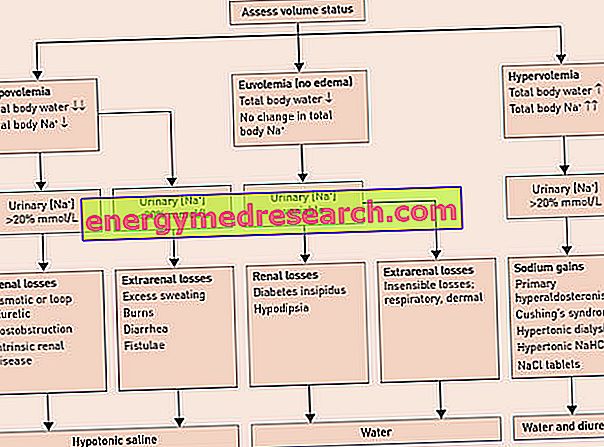What is VFEND?
VFEND contains the active substance voriconazole. It is available as white tablets containing 50 mg or 200 mg of voriconazole, as a 40 mg / ml oral suspension of voriconazole and as a white powder to be dissolved to make up a solution for infusion (drip into a vein).
What is VFEND used for?
VFEND is an antifungal drug. It is indicated in the treatment of patients (adults and children from 2 years of age) who present:
• invasive aspergillosis (a type of infection due to the fungus Aspergillus sp.);
• candidemia (another type of Candida sp. Fungal infection) in non-neutropenic patients (ie with a normal number of white blood cells);
• serious and invasive Candida sp. Infections, when the fungus is resistant to fluconazole (another antifungal medicine);
• serious and invasive infections with Scedosporium sp . or Fusarium sp . (two different species of mushrooms).
VFEND is indicated in patients with fungal infections during deterioration, which can endanger the patient's life.
The medicine can only be obtained with a prescription.
How is VFEND used?
VFEND should be taken twice a day. The dose of VFEND to use depends on the weight of the patient and the presentation used; for detailed information, please refer to the package insert. Therapy should be started with a loading dose. The purpose of the loading dose is to stabilize blood levels on the first day of administration. The loading dose is then replaced with a maintenance dose, which can be changed based on the patient's response. The loading dose is not necessary in children aged 2 to 12 years.
Both doses, from loading and maintenance, can be administered by infusion or by mouth, using tablets or suspension; however, the use of the suspension is recommended in children aged 2 to 12 years. Tablets and suspension should be taken at least one hour before or after meals.
How does VFEND work?
The active substance in VFEND, voriconazole, is an antifungal medicine belonging to the group of triazole antifungals. It works by preventing the formation of ergosterol, an important constituent of fungi cell membranes. Without ergosterol the fungus dies and can no longer spread. In the Summary of Product Characteristics the list of fungi for which VFEND is active is shown.
What studies have been carried out on VFEND?
The study on VFEND for invasive aspergillosis involved 277 immunocompromised patients, ie with a weakened immune system. VFEND has been compared to amphotericin B (another antifungal drug). In the VFEND study for candidemia (370 patients) VFEND was compared with an amphotericin B treatment followed by fluconazole. VFEND has been studied in severe Candida infections (55 patients) resistant to treatment, in cases of scedosporiosis (38 patients) and fusariosis (21 patients). Most patients treated with VFEND for these rare infections had not tolerated or responded to previous treatments with other antifungal therapies. VFEND has also been studied in 61 children. In all the studies, the main measure of effectiveness was the partial or complete response to therapy.
What benefit has VFEND shown during the studies?
In invasive aspergillosis the percentage of patients who responded to treatment was higher in the group treated with VFEND than in the group treated with amphotericin B (53% versus 31%). Survival for voriconazole was significantly greater than that recorded with amphotericin B. For candidemia, the percentage of patients who had shown a response to treatment with VFEND at the end of therapy was identical to that in the control group (72% ).
A positive outcome was found in 24 subjects out of 55 (43.6%) suffering from serious Candida infections refractory to treatment. In most subjects (15 out of 24) the answer was complete. In the treatment of scedosporiosis and fusariosis, the response was a total of 28 patients out of 59.
What are the risks associated with VFEND?
The most frequently reported side effects are visual disturbances, fever, rash, nausea, vomiting, diarrhea, headache and swelling in the extremities. Stomach pains and changes in stool consistency should be referred to a doctor. For the full list of all side effects reported with VFEND, see the Package Leaflet.
VFEND should not be used in people who may be hypersensitive (allergic) to voriconazole or any of the ingredients. VFEND should not be used in patients who are treated with any of the following drugs:
• terfenadine, astemizole (for allergies)
• cisapride (for stomach problems)
• pimozide (for the treatment of mental illnesses)
• quinidine (due to irregular heart beat)
• rifampicin (for the treatment of tuberculosis)
• carbamazepine (for the treatment of convulsions)
• phenobarbital (for severe insomnia and convulsions)
• ergot alkaloids (for example, ergotamine, dihydroergotamine; for migraine)
• sirolimus (for transplant patients)
• efavirenz (for the treatment of HIV)
• ritonavir (for the treatment of HIV) in doses of 400 mg and over, twice a day
Caution is also recommended when VFEND is taken concurrently with other medicines; for more details, see the illustrative leaflet.
Why has VFEND been approved?
The Committee for Medicinal Products for Human Use (CHMP) decided that VFEND's benefits are greater than its risks in the treatment of the CHMP therefore recommended that it be given marketing authorization for VFEND.
Further information on VFEND:
On 19 March 2002, the European Commission issued a marketing authorization valid for VFEND, valid throughout the European Union, to Pfizer Limited.
For the full version of the evaluation (EPAR) of VFEND, click here.
Last update of this summary: 09-2006.



